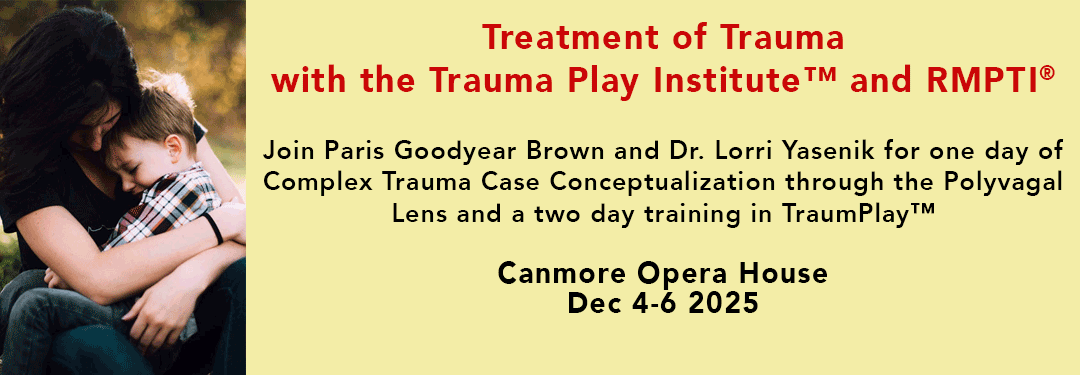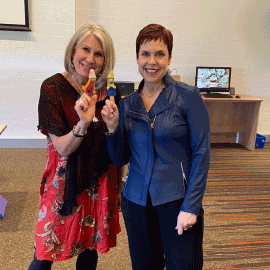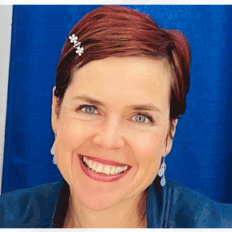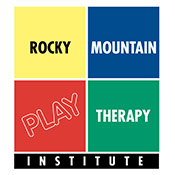
Special Edition Yellow Stream:
Treatment of Trauma with The Trauma Play Institute™ and RMPTI®
December 4-6, 2025
Thursday: 12:00pm-4:30pm MT
Friday: 9:00am - 4:30pm MT
Saturday: 9:00am-4:30pm MT
16.5 Contact hours (In-Person, or Live Webinar)
COST: $1375
Join Paris Goodyear-Brown and Dr. Lorri Yasenik for one day of Complex Trauma Case Conceptualization through the Polyvagal Lens and a two day training in TraumPlay ™ .
 Day 1, Paris and Lorri, Co-editors of Polyvagal Power in the Playroom: A Guide for Play Therapists, identify key concepts for case conceptualization of trauma cases through a polyvagal lens. During this interactive session, participants will study complex trauma case examples and apply methods to use for an ongoing conceptualization process. The focus will be on the evolutionary neurobiology of threat detection and an integrated autonomic nervous system. How do play therapists work with the movement between autonomic states induced by trauma? Immobilization behaviors and sympathetic activations are extreme trauma responses often seen by trauma therapists. Explore how a client's movement up and down the polyvagal ladder is supported by the therapist use of self. Play therapy offers a powerful embodiment practice for the blending of states that harnesses social engagement and mitigates polarization - all while enhancing the neuroception of safety. Practitioner tools for practice will be included.
Day 1, Paris and Lorri, Co-editors of Polyvagal Power in the Playroom: A Guide for Play Therapists, identify key concepts for case conceptualization of trauma cases through a polyvagal lens. During this interactive session, participants will study complex trauma case examples and apply methods to use for an ongoing conceptualization process. The focus will be on the evolutionary neurobiology of threat detection and an integrated autonomic nervous system. How do play therapists work with the movement between autonomic states induced by trauma? Immobilization behaviors and sympathetic activations are extreme trauma responses often seen by trauma therapists. Explore how a client's movement up and down the polyvagal ladder is supported by the therapist use of self. Play therapy offers a powerful embodiment practice for the blending of states that harnesses social engagement and mitigates polarization - all while enhancing the neuroception of safety. Practitioner tools for practice will be included.
On day 2 and 3, Paris will introduce the TraumaPlay Model, a flexibly sequential play therapy model for treating children who have experienced extreme stress related to chronic maltreatment, discrete traumatic incidents, interpersonal trauma, or attachment disturbances due to caregiver disruptions.
This attachment grounded, flexibly sequential play therapy model offers an umbrella framework of core components that serve as scaffolding for dozens of immediately useful play therapy interventions for treating traumatized children and their caregivers.
LEARNING OBJECTIVES
- List all seven primary components of TraumaPlay™
- List the three roles of the TraumaPlay™ Therapist
- Define the phrase "titration of the dose"
- List three therapist-directed activities for enhancing safety and security in play
- Describe four play therapy interventions that assess and augment
- Describe three play therapy interventions that decrease a child's sense of physiological arousal.
- Describe six play therapy interventions that help parents co-regulate their children more effectively.
- Delineate the three processes of posttraumatic play/play-based gradual exposure articulated in TraumaPlay
- Use the Polyvagal Zoo as one playful way to communicate polyvagal theory to children and their caregivers
- List three play therapy interventions that invite disclosure in TraumaPlay™.
- List five play therapy interventions that prompt coherent narrative building in TraumaPlay™.
- List four prop-based play therapy interventions that help integrate somatic memories during coherent narrative building.
ABOUT THE GUEST INSTRUCTOR
 Paris Goodyear-Brown, MSSW, LCSW, RPT-S, and Approved EMDR Consultant, is the creator of TraumaPlay™, the Executive Director of the TraumaPlay Institute, the Clinical Director of Nurture House, and an Adjunct Instructor of Psychiatric Mental Health at Vanderbilt University. She is a Ted Talk speaker, a master clinician, a thought leader in the fields of child trauma and play therapy globally, has received the APT award for Play Therapy Promotion and Education, and served as the Executive Director of the Lipscomb Play Therapy and Expressive Arts Center. She is on the board of TNAPT, and has written over twenty chapters and articles as well as twelve books, including Trauma and Play Therapy, Parents as Partners in Child Therapy, Big Behaviors in Small Containers., and her newest edited volume Polyvagal Power in the Playroom.
Paris Goodyear-Brown, MSSW, LCSW, RPT-S, and Approved EMDR Consultant, is the creator of TraumaPlay™, the Executive Director of the TraumaPlay Institute, the Clinical Director of Nurture House, and an Adjunct Instructor of Psychiatric Mental Health at Vanderbilt University. She is a Ted Talk speaker, a master clinician, a thought leader in the fields of child trauma and play therapy globally, has received the APT award for Play Therapy Promotion and Education, and served as the Executive Director of the Lipscomb Play Therapy and Expressive Arts Center. She is on the board of TNAPT, and has written over twenty chapters and articles as well as twelve books, including Trauma and Play Therapy, Parents as Partners in Child Therapy, Big Behaviors in Small Containers., and her newest edited volume Polyvagal Power in the Playroom.
Paris delights in serving traumatized children and families locally, loves to travel with her family, and finds great joy in equipping child trauma therapists all over the world.
